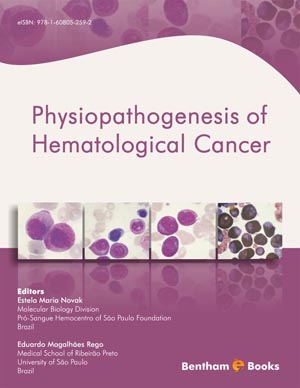Abstract
Acute lymphoblastic leukemia (ALL) is the most frequent cancer in children and originates from genetic lesions in progenitor cells responsible for the malignant transformation. The knowledge of the molecular basis of the ALL is important not only for a better understanding of this disease but also for the identification of prognostically relevant ALL sub-groups and potential pathways to target therapy. In this chapter we discuss the molecular basis of acute lymphoblastic leukemia, including the identification of different genetic alterations in B and T-lineages ALL and the use of the Immunoglobulin (IG) and T-cell receptor (TR) genes rearrangements, as marker of clonality and minimal residual disease (MRD) detection.
Keywords: Chromosomal Aberrations, Genetic Alterations in B and T-lineages ALL, Immunoglobulin (IG), T-cell receptor (TR) Genes Rearrangements, Gene Expression Signatures, Molecular Basis of ALL, Clonal abnormalities, Pharmacogenetics, Immunoglobulin and TCR genes, Immunoglobulin and TCR gene rearrangements in ALL, Minimal Residual Disease (MDR) detection.






















